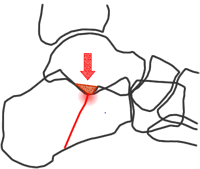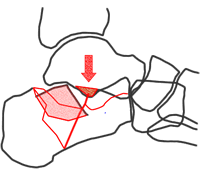


Continuing descent of the talus and impaction against the medial fragment may split off one or more further joint fragments, and pushes the joint surface down.
This shows secondary fracture lines emerging from the superior surface of the calcaneum; they may also emerge posteriorly - see the Essex-Lopresti classification illustrations.
On release of force, the talus recoils upwards, drawing the medial calcaneal fragment with it because of ligamentous attachment.